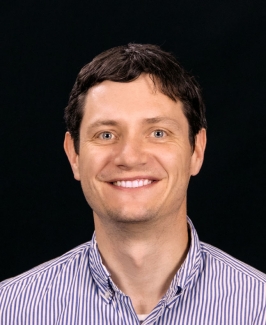The Breakthrough Prize is considered the highest-paying prize in science, with a total of $21.6 million for achievements in fundamental physics, mathematics and life sciences. On Thursday, JILA’s newest fellow Jason Dexter was one of 347 scientists to be honored with the Breakthrough Prize in Fundamental Physics for their work on the Event Horizon Telescope.
But don’t worry; he won’t be quitting his job at JILA any time soon. The $3 million prize for the team works out to about $8,600 per participant—so it might be enough to pay rent in Boulder, he joked.
Dexter worked on predictions on what the Event Horizon Telescope would see while he was doing his Ph.D. in Seattle. And his group’s prediction for M87, the black hole in the now famous image, was pretty close. Seeing the results come back from the experiment was incredible.
Prior to arriving in Boulder, Dexter was at the Max Planck Institute for Extraterrestrial Physics, where he was also involved in the GRAVITY project. But many of the American Physical Society experts on black holes are here at JILA, so Dexter chose to come here.
“It allows for a lot of lively discussions on black hole physics,” he added.
At JILA, Dexter is now building his research group, and continues to study images and videos of gas falling into black holes, and what that can tell us about how black holes work. As an astrophysicist, his work focuses on theory and interpretation around these observations—and seeing that image from the Event Horizon Telescope is just the start of new discoveries in physics, he added.
“Now that evidence comes down to the scale of the event horizon itself,” he said. “The best is yet to come.”
“It was amazing,” Dexter said. “For me, personally, it’s the coolest thing that I’ve seen in science.”
Prior to arriving in Boulder, Dexter was at the Max Planck Institute for Extraterrestrial Physics, where he was also involved in the GRAVITY project. But many of the American Physical Society experts on black holes are here at JILA, so Dexter chose to come here.
“It allows for a lot of lively discussions on black hole physics,” he added.
At JILA, Dexter is now building his research group, and continues to study images and videos of gas falling into black holes, and what that can tell us about how black holes work. As an astrophysicist, his work focuses on theory and interpretation around these observations—and seeing that image from the Event Horizon Telescope is just the start of new discoveries in physics, he added.
“Now that evidence comes down to the scale of the event horizon itself,” he said. “The best is yet to come.”



 The Physics Frontiers Centers (PFC) program supports university-based centers and institutes where the collective efforts of a larger group of individuals can enable transformational advances in the most promising research areas. The program is designed to foster major breakthroughs at the intellectual frontiers of physics by providing needed resources such as combinations of talents, skills, disciplines, and/or specialized infrastructure, not usually available to individual investigators or small groups, in an environment in which the collective efforts of the larger group can be shown to be seminal to promoting significant progress in the science and the education of students. PFCs also include creative, substantive activities aimed at enhancing education, broadening participation of traditionally underrepresented groups, and outreach to the scientific community and general public.
The Physics Frontiers Centers (PFC) program supports university-based centers and institutes where the collective efforts of a larger group of individuals can enable transformational advances in the most promising research areas. The program is designed to foster major breakthroughs at the intellectual frontiers of physics by providing needed resources such as combinations of talents, skills, disciplines, and/or specialized infrastructure, not usually available to individual investigators or small groups, in an environment in which the collective efforts of the larger group can be shown to be seminal to promoting significant progress in the science and the education of students. PFCs also include creative, substantive activities aimed at enhancing education, broadening participation of traditionally underrepresented groups, and outreach to the scientific community and general public.